Words and Photography: Craig Cheetham
It took 15 years for an affordable MG sports car to return – but it was worth the wait
Astonishingly, it’s now 30 years since the MGF broke cover – and that’s long enough for many people to forget the enormous impact the first all-new MG sports car since the MGB had. Indeed, for many MGF owners, many of whom are younger than their cars, it’s not even remembered at all.

Yet here was a two-seater roadster, priced at a level where you could buy something as ordinary as a Ford Escort, yet equipped with a mid-engined layout, willing performance and surprising levels of grip. It may have been developed on a piecemeal budget, but the MGF was a genuinely great car to drive.
But let’s not get ahead of ourselves. First, a history lesson. Following the closure of MG’s Abingdon factory in 1980, British Leyland and Austin Rover did all they could to keep the remaining sporting brand in its armoury alive, but while they’re cherished by enthusiasts today, Metros, Maestros and Montegos with racy red seatbelts were never quite enough to satisfy the brand’s purists.

What was needed was an affordable, open-top sports car – the very DNA of the brand. But with no budget to develop one, it would be 1993 before a wind-in-the-hair MG reappeared in the form of the MG RV8 – a clever way of relaunching the brand (and new Heritage MGB bodyshells) by harking back to the past, and a hint of what was around the corner. It was very much a skunkworks development, created by Rover Special Projects in the same Portakabin (for that’s what it was) as the Rover Mini Cooper and the Rover 800 Tickford Turbo. The RV8’s popularity, not least in Japan, lit the blue touchpaper to expedite the development of a new, small sports car.
It was a chance to fulfil a dream that had been on the drawing board pretty much since Abingdon was shuttered-up. In 1984, a new Midget (project ADO21) was nearly signed off, but budgets prevented it, while in 1985 the MG EX-E concept came along to remind people that the brand was still alive and part of the company’s future plans. The mid-engined EX-E was stillborn, but its rear end styling can quite clearly be seen in the MGF and it was a great platform for designers Gordon Sked and Gerry McGovern to make their talents known. Talents that would, ultimately, be used in developing the new MGF.
What came next would be the car that ultimately shaped the new model. Gerry McGovern’s F-16 project was a small, affordable two-seater, originally planned to be a front-engined, front-wheel-drive model that could be potentially built on either the Metro or Maestro platforms. Between 1985 and 1989, it was a ‘between jobs’ project for Austin-Rover’s styling team and was frequently shown to dealers and stakeholders as the ‘MG F-16’, as an intention to re-enter the sports car arena.
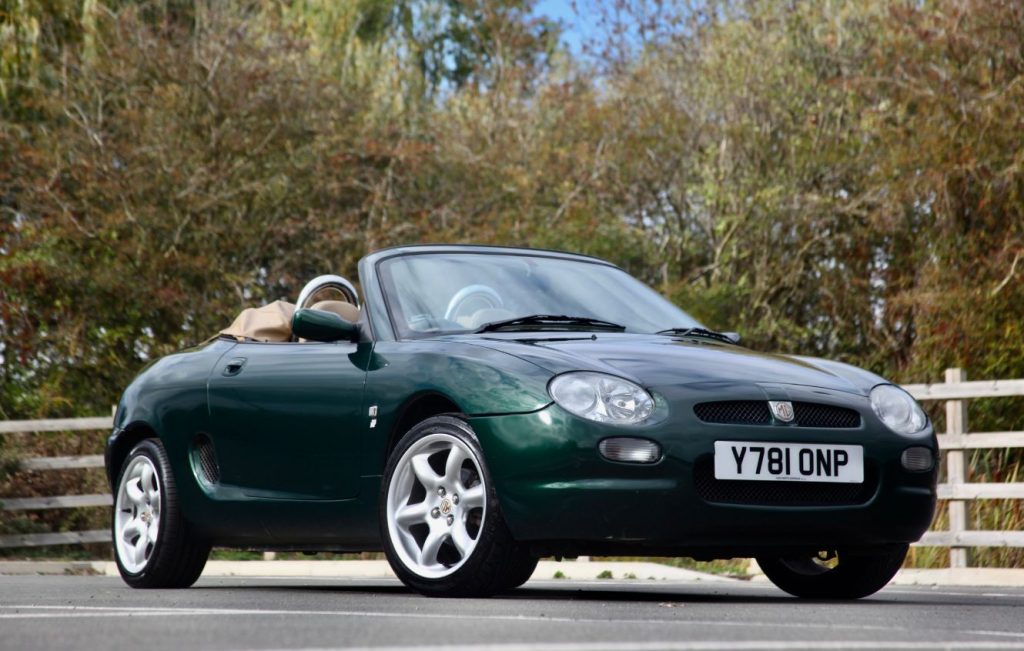
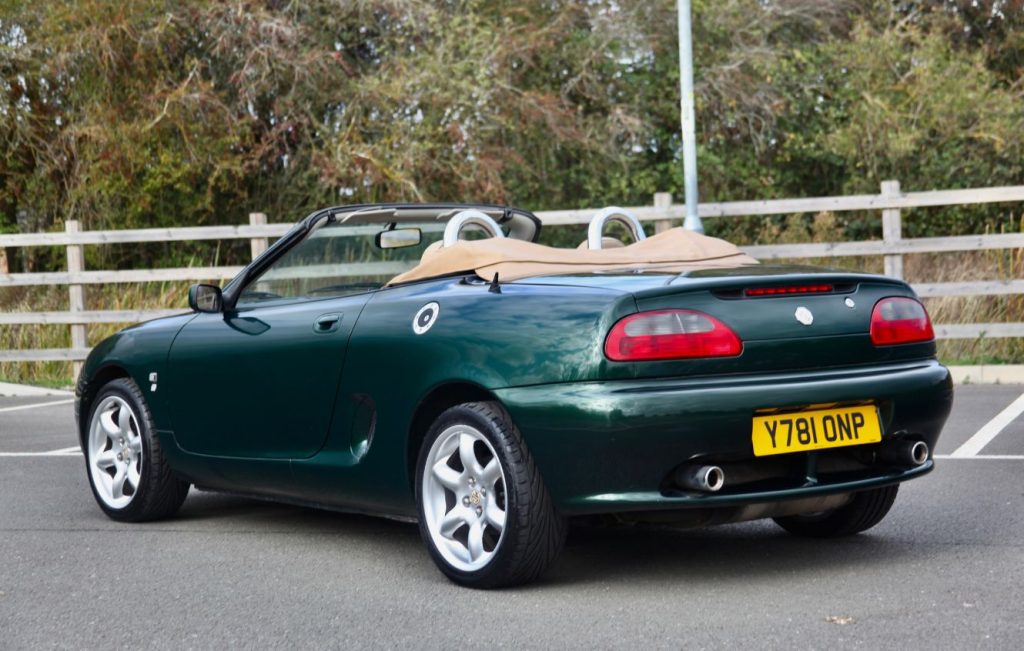
But with the core of the company’s investment now focused on joint Rover-Honda projects and on taking the company out of public ownership, the F-16 never made it across the whitewash. Its styling, however, was carried over and evolved for the PR1, PR2 and PR3 prototypes that were very much the precursors of the production MGF.
After the sale of the Rover Group to British Aerospace in 1988, things changed, and the prospect of an affordable MG sports car was revisited, buoyed by the appearance of the Mazda MX-5 in 1989, which sold well enough to prove that there was a lot of pent-up demand for a traditional, affordable sports car.
It was the PR3 project that ultimately morphed into the MGF. The concept was produced by Luton-based consultants ADC and was a mid-engined, rear-wheel-drive design, echoing the layout of the Fiat X1/9 and Toyota MR2. The decision to go with it was made by future MG Rover Chief Executive, John Towers, who was Director of Product Development at the time, with the new 16-valve K-Series engine earmarked as the heart of the car. The concept evolved, gaining a front end that was instantly recognisable as related to the MGB, plus that EX-E-inspired rear end. Being mid-engined, though, there was no obvious platform to develop the car upon, and that’s where the decision to use Moulton Hydragas suspension came in, by cleverly mounting the MGF’s unibody bodyshell onto two interlinked Metro front subframes, the rearmost of which carried the engine. It helped, too, that the ‘R6’ Metro facelift had been reengineered to carry the new K-Series engine block.
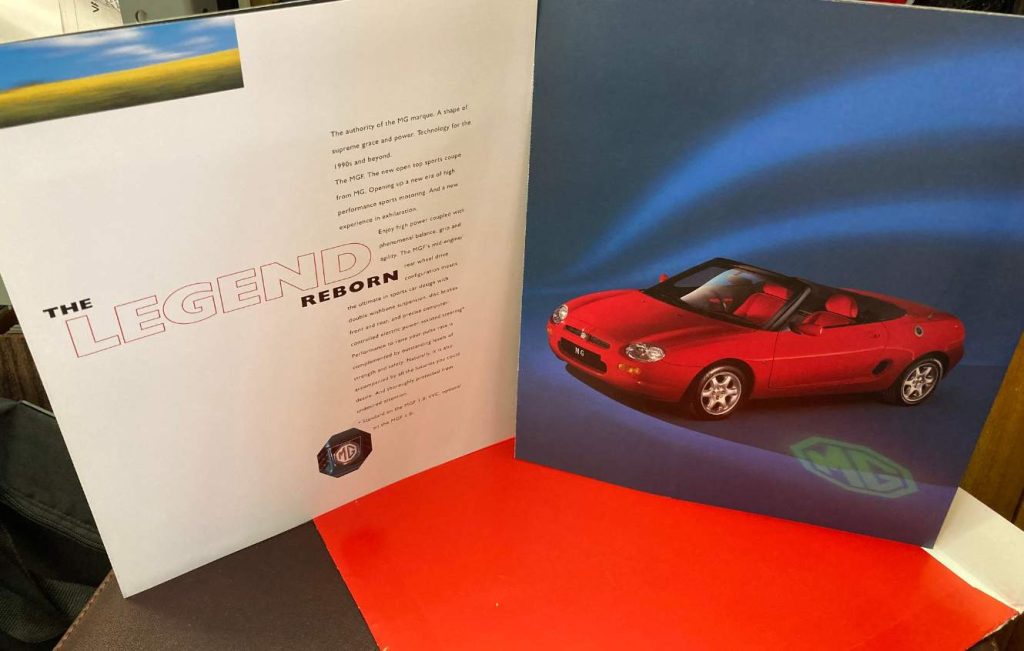
Also working to the MG’s advantage was the acrimonious split from Honda, when BMW agreed to buy the company in 1994. The plan for the MGF was to extract as much power as the engineers could muster from the 1.4-litre ‘K16’ K-Series, but the need to get away from Honda’s larger four-cylinder engines led to Rover Group expanding the capacity to suit not only the new 400 models, but also the new Land Rover Freelander.
It was that or kill off the MGF altogether, which very nearly happened as BMW was about to launch its own roadster in the form of the Z3. But with the F so far down the route of development, to kill it off made no sense.
The big block K-Series was created by using new cylinder housings, known as damp liners, which allowed a larger cylinder size by fitting bigger bores into the same-sized block.
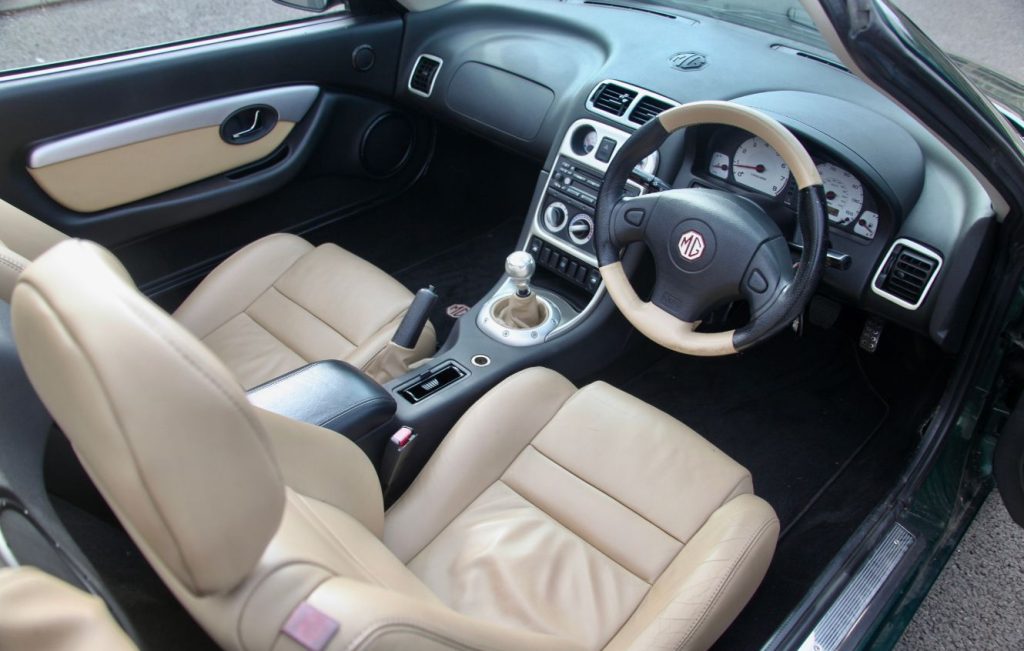
But for the faster versions of the MGF, there was more. Given that the project was originally planned around a lower-output 1.4-litre engine, Rover had already looked into forced induction, with turbochargers and superchargers a consideration. But in the end, variable valve control (or VVC) won out as a way to up the output from 118bhp to 143bhp – a solution that Rover’s engineers had been looking at since 1989 under the codename ‘Hawk’.
The production car was finally ready in March 1995, when it was exhibited at the Geneva Motor Show – the first all-British model to emerge from the company since the Austin Montego in 1984. It got a rapturous reception, proving the theory that there was huge pent-up demand for a new MG sports car.
It wasn’t perfect, of course. Budgets saw to that, meaning the interior used parts bin switchgear from the Metro, Montego and Rover 200 that felt pretty dated, while some critics said the driving position was too high – but what Rover Group had achieved on a minimal budget was incredible, really, and when the car finally arrived in showrooms, six months to the day since it was revealed in Switzerland, there was a steady waiting list.
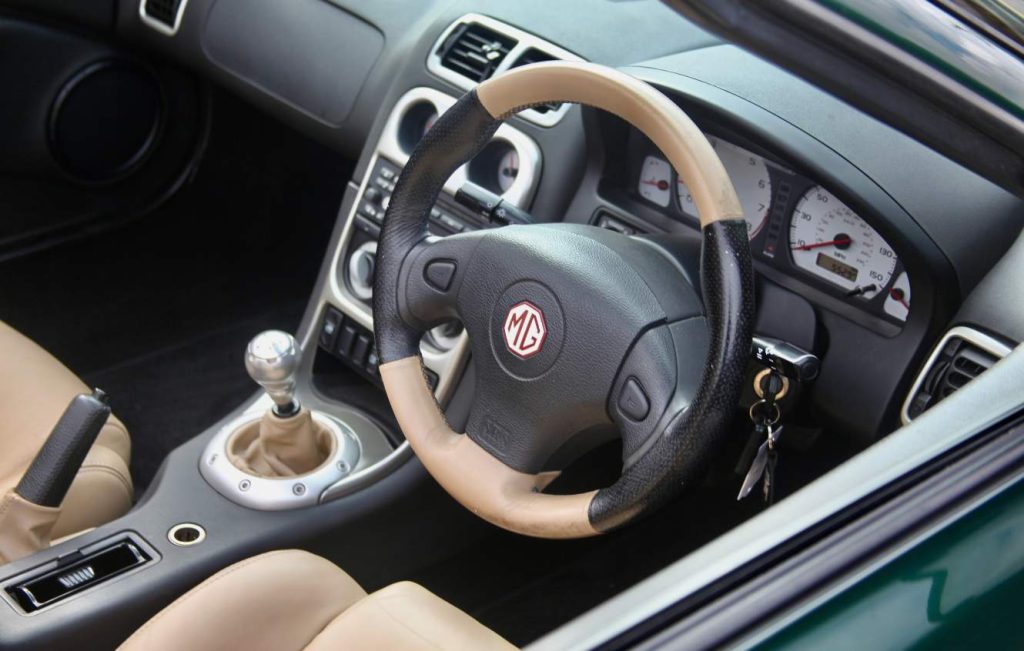
It remained popular throughout its life, knocking the MX-5 off its perch as the UK’s best-selling sports car and remaining there after the MGF morphed into the TF, until MG Rover Group’s collapse in 2005 – an astonishing achievement for a car that was developed in its entirety on what would have been less than the marketing budget for a higher-volume model.
Today – and it won’t be like this forever – the MGF is one of the cheapest sports cars money can buy. For £1000, you’ll get a roadworthy one and providing it isn’t terminally rotten and has evidence of a past head gasket replacement (for that’s the MGF’s Achilles’ Hell), you’ll have a huge amount of fun for the money. It’s only a matter of time before the rough ones fall by the wayside, people start to take notice, and demand starts to outstrip supply. Buy one now, and enjoy it while it lasts…
Classic car insurance from Hagerty
Keep your classic on the road with expert classic car insurance built by car lovers, for car lovers. Rated ‘Excellent’ on TrustPilot.






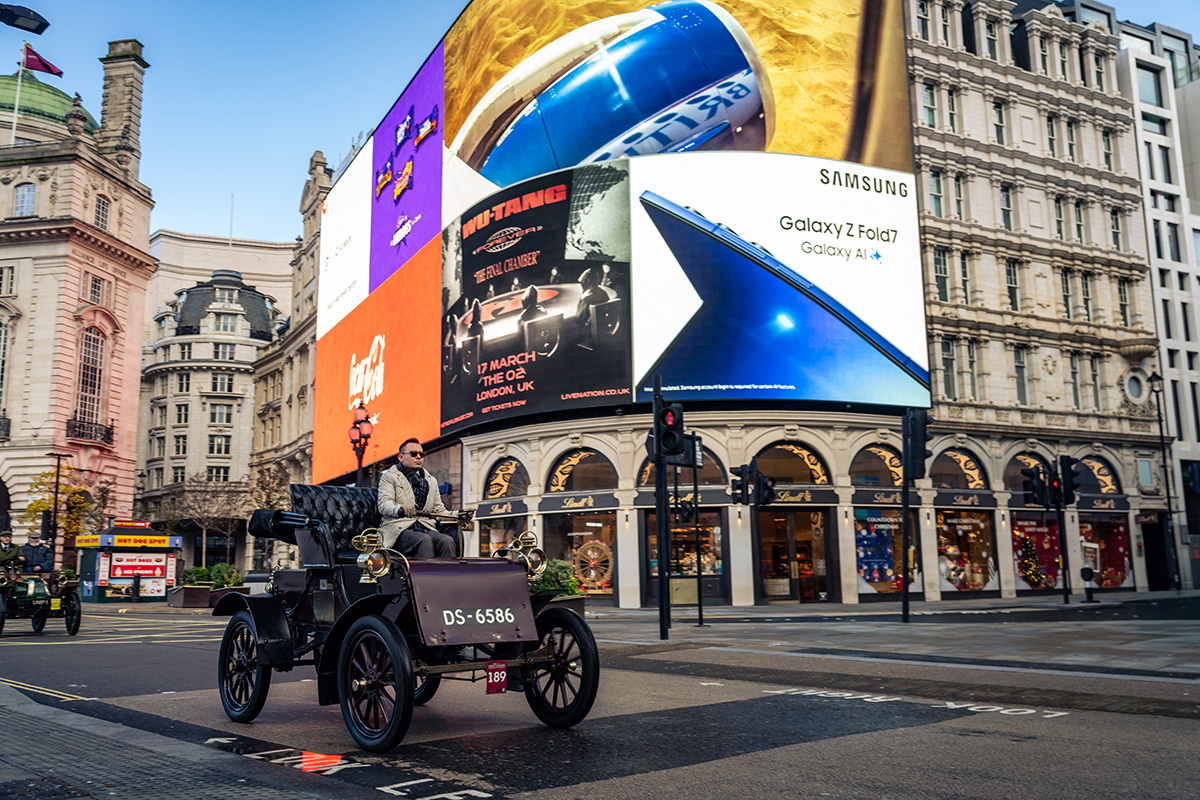



Achilles Hell. Wasn’t he that Greek detective?
I still own my original MGB I bought new in 1973. I would love to see new MG’s on the road as would the whole world I’m sure.
Thanks for the great stories. Well written.